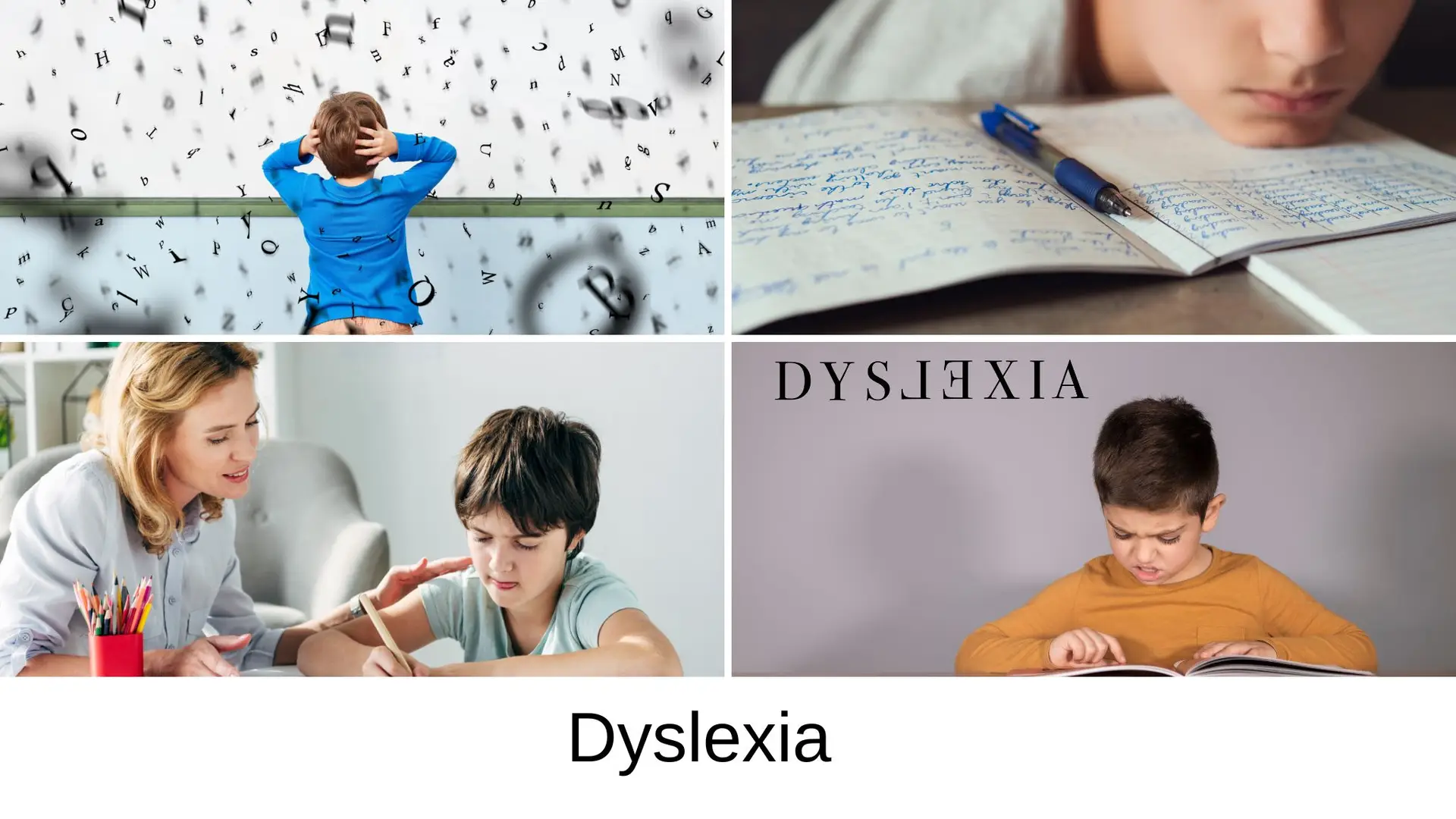
The Lifespan of Chronic Pain
Chronic pain is a complex and multifaceted experience that can manifest at any stage of life, influencing physical, emotional, and social well-being. Remarkably, its roots may even begin before birth, as genetic predispositions and prenatal factors shape an individual’s susceptibility to pain. As life progresses, chronic pain may emerge due to childhood injuries, chronic illnesses, or age-related conditions, each phase presenting unique challenges and coping mechanisms. Even in bereavement, chronic pain can linger, both physically and emotionally, as individuals navigate the profound impact of loss. Understanding the lifespan of chronic pain sheds light on its pervasive nature and underscores the importance of a compassionate, holistic approach to pain management at every life stage.

The Journey Through Life
The journey of chronic pain often intertwines deeply with the major milestones of life, from fertility to bereavement. For some, chronic pain begins during the pursuit of parenthood, with conditions like endometriosis or pelvic pain affecting fertility and pregnancy. The challenges of managing pain during pregnancy or postpartum can amplify physical and emotional strain. As life unfolds, chronic pain may emerge or worsen due to injuries, chronic conditions, or the natural aging process, impacting daily life, relationships, and mental health.
In later years, as the body becomes more vulnerable, chronic pain can take on new forms, complicating mobility and independence. Finally, even in bereavement, chronic pain can persist or intensify, as grief and loss may exacerbate both physical and emotional suffering. This journey underscores the need for compassionate, adaptive care that addresses not only the physical aspects of pain but also its profound emotional and psychological effects at every stage of life.
Chronic pain can significantly impact various aspects of life, including fertility. The relationship between chronic pain and fertility can be complex and multifaceted.
Pregnancy itself brings about significant physical and hormonal changes, which can exacerbate or even trigger chronic pain conditions. Conditions such as fibromyalgia, pelvic girdle pain, and lower back pain are common ailments experienced during pregnancy. The fluctuating hormones, weight gain, and postural changes contribute to the intensity and frequency of pain episodes.
Children with chronic pain face numerous hurdles in their everyday lives. Pain can interfere with their ability to participate in school, socialize with friends, and engage in physical activities. This can lead to feelings of isolation, frustration, and anxiety. It is crucial for parents, caregivers, and healthcare professionals to recognize these challenges and provide the necessary support.
Entering adulthood is a whirlwind of new experiences and responsibilities, a time filled with hope, dreams, and uncertainty. But for some of us, it also comes with an uninvited guest Chronic Pain
As we age, our bodies undergo numerous changes, and unfortunately, one of the most common challenges faced by elderly individuals is chronic pain. The aging process brings about physiological changes that can exacerbate the experience of chronic pain. Conditions such as arthritis, osteoporosis, and degenerative disc disease become more prevalent in older adults, leading to joint pain, backache, and musculoskeletal discomfort.
Chronic pain can significantly impact a person’s quality of life, especially towards the end of life. Managing pain effectively is crucial in end-of-life care to ensure comfort and dignity for the individual. There are various approaches to addressing chronic pain in this context.
Experiencing loss or bereavement while managing chronic pain can create a deeply challenging situation. The intertwining of grief and enduring physical discomfort can amplify each other’s impact, making coping more intricate.

Navigating Daily Life with Chronic Pain
Living with chronic pain requires constant adjustments to everyday routines and priorities, shaping nearly every aspect of a person’s lifestyle. Simple tasks like grocery shopping, cleaning, or even getting out of bed can become daunting challenges, demanding careful pacing and strategic energy management. Many individuals adopt the “spoon theory,” a metaphor for rationing energy throughout the day, to cope with fluctuating pain levels. Social interactions, hobbies, and work life often need to be modified, which can lead to feelings of isolation or frustration.
To maintain balance, people with chronic pain often develop personalized self-care routines that include gentle exercise, mindfulness practices, and prioritising restorative rest. Despite these challenges, resilience and adaptability become essential traits, allowing individuals to find joy and fulfillment while navigating life with chronic pain.
There are various adaptations that can help individuals dealing with chronic pain to manage their condition more effectively by easing daily tasks or reducing strain on the body.
In the UK, there are several financial and supportive benefits available for chronic pain sufferers from both the government and charities:
Navigating a career while dealing with chronic pain can present challenges, but it’s entirely possible to find a fulfilling path.
Managing exercise with chronic pain can be a delicate balance. It’s essential to consult with a healthcare professional or a physical therapist who understands your condition before starting any exercise regimen.
Traveling with chronic pain can be challenging, but with some planning and strategies, it’s possible to make the experience more manageable and enjoyable. Here are some expert tips:
Nutrition plays a significant role in managing chronic pain. A well-balanced diet can positively impact pain levels by reducing inflammation, providing necessary nutrients for tissue repair, and supporting overall health. Here are several ways nutrition can help with chronic pain:
Balancing work and life when dealing with chronic pain can be challenging, but it’s definitely possible. Here are some tips and examples to help create a better work-life balance:

The Impact of Chronic Pain on Mental Health
Chronic pain doesn’t just affect the body—it takes a profound toll on mental health. The constant presence of pain can lead to feelings of frustration, hopelessness, and a sense of loss as it disrupts daily routines, relationships, and personal goals. Many individuals experience anxiety and depression, fueled by the uncertainty of their condition and the strain of managing persistent discomfort. Sleep disturbances, common among those with chronic pain, further exacerbate mood disorders, creating a cycle of emotional and physical exhaustion. Over time, the mental burden of chronic pain can lead to a diminished sense of self-worth and isolation, especially if the pain limits social interactions or work responsibilities. However, with proper mental health support, such as therapy, mindfulness techniques, or support groups, individuals can develop coping strategies, improve emotional resilience, and reclaim a sense of control over their lives.
Anxiety and chronic pain often have a complex relationship. They can feed into each other, creating a cycle that’s challenging to break. Chronic pain can cause or exacerbate anxiety due to the constant discomfort, limitations on daily activities, and uncertainty about the future. In turn, anxiety can heighten the perception of pain, making it feel more intense or overwhelming.
Dealing with both bipolar disorder and chronic pain can be incredibly challenging. The combination can significantly impact your mental and physical well-being. It’s crucial to address both conditions effectively to manage symptoms and improve your quality of life.
The relationship between bipolar disorder and chronic pain isn’t entirely understood, but there are several ways in which they might be connected:
Depression and chronic pain often go hand in hand, forming a challenging cycle that affects both physical and mental well-being. The relationship between them can be complex. Chronic pain can lead to feelings of frustration, hopelessness, and isolation, contributing to depression. Similarly, depression can amplify the perception of pain and make it harder to cope with or manage.
Living with chronic pain can be incredibly challenging, and when coupled with loneliness, it can feel overwhelming. Loneliness often exacerbates the emotional and psychological toll of chronic pain. It’s important to address both aspects for holistic well-being.
Self-harm and chronic pain can be incredibly challenging to cope with. It’s important to seek support and help in managing these issues. Have you spoken to a healthcare professional or therapist about what you’re going through? There are many ways they can assist, from therapy and pain management techniques to finding healthy coping strategies. You’re not alone, and there are people who genuinely want to help you through this.
Sleep and chronic pain often have a complex relationship. Chronic pain can significantly impact sleep quality, making it harder to fall asleep or stay asleep throughout the night. Conversely, poor sleep can also worsen the perception of pain, creating a cycle where one exacerbates the other.
Chronic pain can take a significant toll on mental health, and it’s not uncommon for people experiencing it to feel hopeless or consider suicide. It’s crucial to seek help and support from professionals who specialize in both pain management and mental health.

The Link Between Personality Disorders and Chronic Pain
Personality disorders and chronic pain often share a complex, interwoven relationship, with each influencing the other in profound ways. Individuals with personality disorders may experience heightened sensitivity to pain or struggle with coping mechanisms, intensifying the perception of chronic pain. For instance, emotional dysregulation in borderline personality disorder can amplify the physical and emotional impact of pain, while traits associated with avoidant or dependent personality disorders may hinder access to effective treatments or support systems.
Conversely, chronic pain itself can exacerbate underlying personality traits, as the ongoing stress and isolation from pain strain mental health and relationships. This bidirectional connection underscores the importance of integrative care, where mental health professionals collaborate with pain specialists to address both the physical symptoms and the psychological factors, providing a more comprehensive and compassionate treatment plan.
Living with both a personality disorder and chronic pain can be incredibly challenging. The experience varies widely based on the specific personality disorder and the nature of the chronic pain.

Navigating Intimacy and Connection
Chronic pain can significantly impact sexuality, intimacy, and the expression of one’s sexual and gender identity, creating unique challenges for individuals across diverse orientations, including LGBTQ+ and transgender individuals. Pain during or after sexual activity, fatigue, and reduced mobility may create physical barriers, while medications for pain management can affect libido or sexual function. For transgender individuals, chronic pain related to gender-affirming surgeries, hormone therapies, or dysphoria can add layers of complexity to their sexual experiences and relationships.
Emotional challenges, such as body image concerns, anxiety, or a sense of disconnection from one’s identity, may also affect confidence and intimacy. Open communication with partners and exploring alternative forms of connection are key strategies for maintaining a fulfilling sexual and emotional relationship. Counseling or therapy tailored to the unique experiences of sexual and gender minorities can provide support and practical solutions, empowering individuals to navigate intimacy and their identities while managing chronic pain.
Certain forms of contraception can potentially affect chronic pain in individuals. For instance, some people with chronic pain conditions might experience changes in their symptoms when using hormonal birth control methods like oral contraceptives, patches, or hormonal intrauterine devices (IUDs). These methods can impact pain levels, either alleviating or exacerbating them, depending on the person and their specific condition.
Intimacy can be affected by chronic pain, as it often influences both physical and emotional aspects of a person’s life. Chronic pain might impact someone’s desire for intimacy due to physical discomfort, decreased libido, or emotional distress caused by the pain itself.
Chronic pain can significantly impact relationships, as it affects various aspects of life. Here are some ways it can influence relationships and some tips on managing these challenges:
Sexual activity can be influenced by chronic pain in various ways. Chronic pain, which persists for an extended period can significantly impact an individual’s sexual life. The experience of pain itself can affect one’s desire, arousal, and ability to engage in sexual activities.
Sexual orientation doesn’t directly cause chronic pain, but there might be connections between the two. Chronic pain can impact various aspects of life, including relationships and intimacy.
Chronic pain is a complex issue that can affect anyone regardless of their gender identity. However, research suggests that transgender individuals may experience higher rates of chronic pain compared to the general population.

The Link Between Chronic Pain and Neurodiversity
Chronic pain and neurodiversity often intersect in complex and underexplored ways, highlighting the need for tailored care and understanding. Individuals with neurodivergent conditions, such as autism, ADHD, or sensory processing disorders, may experience chronic pain differently due to heightened sensory sensitivities, altered pain thresholds, or coexisting conditions like hypermobility or fibromyalgia. For example, sensory hypersensitivity in autism can amplify the perception of pain, while the challenges of communicating discomfort may delay diagnosis or treatment. Conversely, the physical and emotional toll of chronic pain can exacerbate neurodivergent traits, such as difficulties with executive functioning or heightened anxiety. Managing chronic pain in neurodiverse individuals requires a holistic approach that considers sensory preferences, communication styles, and the need for predictable, accessible care environments, empowering them to lead fulfilling lives despite the challenges.
Both autism and chronic pain are complex conditions that can have significant impacts on an individual’s life. While they are distinct conditions, they can sometimes coexist, leading to unique challenges.
Both ADHD and chronic pain can significantly impact someone’s life, and dealing with both conditions can pose unique challenges.

Chronic Pain and Dyslexia: Navigating Overlapping Challenges
Living with both chronic pain and dyslexia can present unique and compounding challenges that affect daily life, self-management, and emotional well-being. Dyslexia often requires additional mental energy for tasks like reading or processing information, and chronic pain can further drain cognitive resources, leading to increased fatigue and difficulty concentrating. Pain management strategies, such as understanding treatment plans or keeping symptom journals, may become more daunting due to dyslexia-related difficulties with written communication or organisation.
Additionally, the frustration and stress of managing two complex conditions can impact mental health, exacerbating feelings of overwhelm or self-doubt. Tailored support, such as using assistive technology, visual aids, or simplified resources, can help individuals with dyslexia and chronic pain better manage their conditions, promoting independence and resilience in the face of these overlapping challenges.
Both dyslexia and chronic pain can significantly impact a person’s life, albeit in different ways. Dyslexia is a learning disorder that affects reading, writing, and spelling abilities. It doesn’t necessarily cause physical pain, but it can lead to frustration, stress, and emotional challenges due to difficulties in processing language.

The Challenges of Caring for Someone with Chronic Pain
Caring for someone with chronic pain can be both rewarding and deeply challenging, as the unpredictable nature of the condition often demands physical, emotional, and mental resilience from the carer. The constant need for support—ranging from helping with daily tasks to managing medical appointments—can lead to physical exhaustion and time constraints. Emotionally, carers may grapple with feelings of helplessness as they witness their loved one’s pain, and the strain of providing ongoing care can contribute to burnout, stress, or even resentment. Balancing their own needs while prioritising the well-being of the person they care for can result in neglecting personal health or social connections. Effective communication, seeking respite care, and joining support groups can help carers manage their responsibilities while preserving their well-being, ensuring they can provide compassionate and sustainable care.
Caring for someone with chronic pain can be emotionally and physically demanding. Loneliness can exacerbate the challenges of caregiving by intensifying feelings of isolation, as the caregiver may feel emotionally disconnected from others due to the demands of their role.
Isolation can significantly impact a carer looking after someone with chronic pain. It’s a demanding role that often requires constant attention and care, which can lead to the carer feeling isolated from their own social circles and support networks.

Adverse Childhood Experiences and Chronic Pain
Adverse childhood experiences (ACEs) such as exposure to delinquency, poverty, and poor education can significantly increase the likelihood of developing chronic pain later in life. These early-life stressors often lead to heightened levels of toxic stress, which can dysregulate the nervous system and disrupt the development of healthy pain processing pathways. Children growing up in poverty or environments of delinquency may face limited access to proper healthcare, nutrition, and emotional support, contributing to long-term physical and mental health vulnerabilities.
Poor education further compounds these challenges, reducing opportunities to learn about self-care, stress management, or pain prevention. Over time, the cumulative effect of these disadvantages can manifest as chronic pain, often intertwined with co-occurring conditions like anxiety, depression, or substance use. Addressing these root causes through early intervention, education, and community support can help mitigate the long-term impacts of ACEs and reduce the prevalence of chronic pain among vulnerable populations.
There can be connections between chronic pain and delinquency in childhood, although it’s important to note that individual experiences vary greatly. Chronic pain can significantly impact a child’s life, affecting their physical, emotional, and social well-being.
Growing up in a low-income household can profoundly impact how chronic pain is managed and perceived. Financial constraints often restrict access to specialised healthcare, medications, or therapies essential for addressing and alleviating chronic pain.
The relationship between poor education in childhood and chronic pain can be complex. Limited access to education or inadequate educational experiences during childhood may affect various aspects of life, potentially impacting socioeconomic status, access to healthcare, and opportunities for understanding and managing chronic pain.
Click here for more info
Experiencing chronic pain during childhood can significantly impact various aspects of a person’s life, especially when compounded by poverty. Children facing chronic pain may struggle with daily activities, miss school frequently, and often require medical care, which can be financially burdensome for families living in poverty.
Childhood trauma and chronic pain can often be interconnected, influencing one another in various ways. Trauma experienced during childhood, such as abuse, neglect, accidents, or other adverse events, can have a profound impact on a child’s physical and emotional well-being. This can manifest in different forms, including chronic pain.

Lifespan Treatments for Chronic Pain: Evolving Approaches for Long-Term Relief
Chronic pain sufferers often rely on a variety of treatments throughout their lifespan, as the nature of their pain and its impact evolves over time. Early interventions may include physical therapy, over-the-counter pain relievers, or alternative therapies like acupuncture and yoga, aimed at managing pain while maintaining mobility and quality of life. As the condition progresses, prescription medications, including anti-inflammatories, nerve blockers, or opioids (under strict medical supervision), may be introduced alongside advanced treatments like nerve stimulation or joint injections.
Mental health support, such as cognitive-behavioral therapy or mindfulness practices, becomes increasingly important to address the emotional toll of chronic pain. In later years, palliative care may focus on comfort and holistic approaches, integrating physical, emotional, and spiritual care to ensure dignity and relief. Throughout a chronic pain sufferer’s lifespan, treatments are often tailored to changing needs, blending medical, lifestyle, and psychological strategies for comprehensive management.
Acceptance and Commitment Therapy (ACT) is a form of psychotherapy that aims to help individuals accept the difficulties they face in life while committing to actions that align with their values. It involves mindfulness techniques, acceptance strategies, and commitment to behaviour change.
Cognitive Behavioural Therapy (CBT) is a psychotherapeutic approach that focuses on how thoughts, feelings, and behaviours are interconnected. It’s commonly used to address a wide range of mental health issues, but it has also been found effective in managing chronic pain.
In the context of chronic pain, CBT doesn’t aim to eliminate the physical sensation but instead helps individuals manage their perception and response to pain. It involves several components:
Dialectical Behaviour Therapy (DBT) is a type of psychotherapy initially developed to treat borderline personality disorder (BPD)
When it comes to chronic pain, DBT can be beneficial in managing the emotional distress and mental health challenges that often accompany long-term pain.
Hydrotherapy, the therapeutic use of water, has emerged as a highly effective and natural treatment for chronic pain. It harnesses the healing properties of water to alleviate pain, reduce inflammation, improve circulation, and promote relaxation. Hydrotherapy offers a gentle yet powerful approach to pain management that can complement traditional medical treatments.
Managing chronic pain is a complex journey that often involves medications as part of a comprehensive treatment plan. While medications can effectively provide relief from pain, they can also have side effects and potential risks. It’s important to know what those side effects might be, so you can make an informed decision about the types of treatments you pursue.
Mindfulness can be a helpful tool for those dealing with chronic pain. Essentially, it involves focusing your attention on the present moment without judgment. It helps individuals become more aware of their thoughts, feelings, and bodily sensations, allowing them to manage pain more effective.
Occupational therapy (OT) is like a gentle sunrise in the life of those grappling with chronic pain. It’s not a sudden flare of healing, but a gradual light seeping into their world, illuminating new paths towards better health and independence. OT practitioners are like compassionate guides, walking alongside individuals on these paths, empowering them to venture beyond the limitations imposed by persistent pain.
Physiotherapy can be incredibly beneficial in managing chronic pain. Chronic pain, lasting for weeks, months, or even longer, often stems from various conditions like arthritis, fibromyalgia, injuries, or nerve damage.
Psychological therapy plays a crucial role in managing chronic pain. Chronic pain isn’t just a physical sensation; it involves emotional, cognitive, and behavioural aspects as well. Here’s how psychological therapy can help
Surgery can be an option for chronic pain when other treatments haven’t provided relief. However, it’s crucial to thoroughly explore non-surgical options before considering surgical interventions.
Systematic desensitization is a therapeutic technique often used in the treatment of anxiety disorders, phobias, and certain forms of chronic pain. It involves gradually exposing an individual to the source of their fear or discomfort while teaching them relaxation techniques to manage their anxiety response.
The connection between trauma and chronic pain is a complex and multifaceted one. Trauma, whether physical or emotional, can have a significant impact on both mental and physical health. Chronic pain, which persists for an extended period, can often be linked to past traumatic experiences.
Yoga therapy can be immensely beneficial for managing chronic pain. Its combination of physical postures, breathing exercises, meditation, and relaxation techniques can help alleviate pain and improve overall well-being. Here’s how yoga therapy can help with chronic pain: